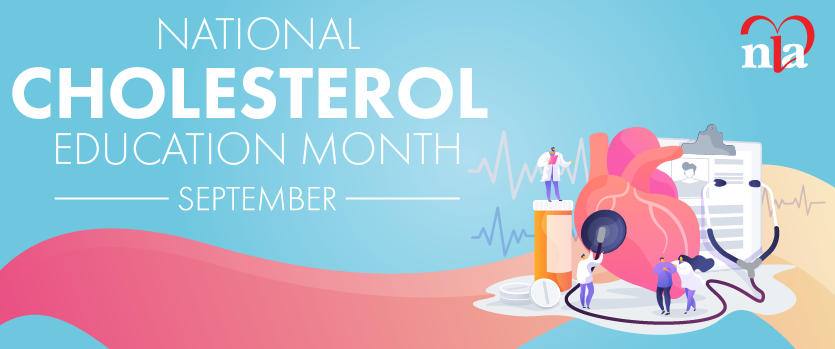There is a large population >80 in the U.S., some who have either been advised to or chose to discontinue statin therapy. Randomized clinical trials have typically excluded very elderly subjects or group all elderly into age >65. There are vast differences in this population in terms of frailty vs. vigorousness, comorbidities, motivation, and financial resources. In the rapidly growing 80+ age group, the prevalence of ASCVD exceeds that of younger age groups, affecting 84.7 percent of men and 85.9 percent of women.1
Prescribing patterns for the elderly have been reportedly low,2–5 and patient adherence rates tend to significantly decrease over time.6–7 The evidence base regarding the use of statin specifically in the over 80 age group follows.
Relevant Clinical Research Studies
The Pravastatin in Elderly Individuals at Risk of Vascular Disease (PROSPER) trial,8 randomized 5,804 United Kingdom patients age 70 to 82 with a history of, or risk factors for, vascular disease to 40 mg pravastatin or placebo with an average follow-up of 3.2 years. Mean low-density lipoprotein cholesterol (LDL-C) reduction was 34 percent with pravastatin, which was well tolerated with 24 percent coronary heart disease (CHD) mortality reduction and no significant adverse effects on liver function, muscle enzymes, cognition, or disability. Pravastatin treatment was not associated with a decrease in mortality.
The Study Assessing Goals in the Elderly (SAGE) trial,9 a prospective multicenter randomized double-blind international trial, compared treatment with atorvastatin 80 mg to pravastatin 40 mg in 893 coronary artery disease (CAD) patients age 65–85. The primary endpoint was change in ischemia duration on comparison of 48- hour holter monitor studies at baseline, three months, and 12 months. Both arms had significant reduction in ischemia duration. There was no significant difference between the groups, although there was a favorable trend in major coronary events and a post-hoc finding of significant all-cause mortality reduction favoring atorvastatin. Overall treatment- related adverse events were 17.3 percent on atorvastatin, 13.9 percent on pravastatin, but not statistically different.
LDS Hospital/University of Utah2 conducted a prospective observational cohort study of 7,220 CAD patients for an average of 3.3 years. Statin therapy was associated with mortality reductions in all age groups, with greatest mortality benefit found in the >80 group (29.5 percent vs. 8.5 percent, p=0.03).
A prospective observation study by NY Medical College and University of Texas Medical School3 followed 1,410 post-MI patients with a mean age of 81 and LDL-C >125 mg/dl in a long-term healthcare facility with a mean follow-up of three years. New coronary event incidence was 46 percent on statin vs. 72 percent on no statin.
A retrospective chart abstraction of 5,500 acute MI patients, found patients <80 who were prescribed a statin at discharge had a significant 16 percent lower three-year all-cause mortality compared to patients not discharged on a statin (p=.002). Patients >80 were not found to have a significant statin-related mortality benefit.4
An observational Swedish study of 14,907 acute MI patients >age 80 with median follow-up of 296 days and a maximum of five years, compared outcomes for patients who had been prescribed statin therapy compared to no statin treatment at discharge. Following exclusion of patients who died within the first year, the remaining patients were found to have a 37 percent reduction in cardiovascular mortality and acute MI mortality (RR 0.64, CI 0.57-0.73).10
The meta-analysis of more vs. less intensive statin therapy by the Cholesterol Treatment Trialists Collaboration11 included five trials of acute coronary syndrome or stable CAD patients. Subjects >75 on more intense statin had a statistically significant reduced risk of major vascular events of 4.8 percent compared to 5.4 percent on less intense statin (p<0.0001).
Statin-prescribing practices are also strongly influenced by the provider’s and patient’s perception of safety concerns. The evidence base specifically regarding the over 80 age group is summarized below.
Potential Statin Safety Concerns
Li et al13 found no significant association between statin use and dementia or Alzheimer disease in their prospective study of 2,356 cognitively intact randomly selected patients >65. Brain autopsies of 110 subjects aged 65–79 years with prior statin use found a reduced risk for typical Alzheimer’s pathology. The Cardiovascular Health Study, a longitudinal study of 3,334 patients >65, found statin use associated with slight reduction in cognitive decline and lower risk of silent infarcts detected by MRI.14 The FDA found rare post-marketing reports of cognitive impairment have not generally been serious and are reversible on discontinuation.15 In a 2013 systematic review of 57 statin studies, University of Pennsylvania researchers concluded that the evidence does not support an association between statin use and memory loss or dementia.16
The FDA reviewed post-marketing data of clinically serious hepatotoxicity with statin use and noted extremely low incidence of <2 per 1 million patient-years.15 A 2008 meta-analysis of seven randomized clinical trials found more intense statin regimens associated with a 1 percent increased drug discontinuation rate due to elevated transaminases.17
These data prompted the FDA to remove routine LFT monitoring for asymptomatic patients from the statin package insert in 2012. PROSPER8 reported a very low 0.03 percent incidence of >3 fold transaminases increase. In contrast, the SAGE investigators,9 reported elevated transaminases on atorvastatin 80 mg were 4.3 percent compared to 0.2 percent on pravastatin 40 mg, however, they normalized on repeat testing or statin discontinuation. Considering these data, clinicians may want to monitor LFTs for the very elderly on high intensity statin.
The risk of myopathy has been associated with advancing age, female gender, and renal or hepatic abnormalities,18 with underrepresentation of these populations in clinical trials. Myalgia incidence was 1 percent in PROSPER, with no rhabdomyolysis cases.8 Terry A. Jacobson, MD, discussed factors associated with muscle injury risk for the elderly, including hypothyroidism, concomitant cytochrome P450 inhibitor, fibrate, or immunosuppressant use, reduced lean body mass, and polypharmacy.19 In 2011, the FDA advised avoidance of the 80 mg simvastatin dose for new patients because of the increased risk of muscle damage, and the avoidance or dose modification of specific medications to reduce rhabdomyolysis risk.20
New cancer diagnosis in PROSPER increased on pravastatin,8 however, extended follow-up of subjects to an average of 8.6 years found no increased cancer risk.21 A Swedish study of MI patients age >80 found no statin-related increase in cancer mortality.7 Setoguchi et al found rates of colorectal, lung, and breast cancers in patients >65 similar to the general population.22
In conclusion, the decision to implement statin therapy for the high risk very elderly with ASCVD should incorporate a shared decision-making approach with an upfront discussion of benefits and risks, and consideration of patient perceptions, comorbidities, concurrent medications, frailty, and cost concerns. The majority of studies show overall a very favorable cardiovascular benefit with low associated risk that may help preserve quality of life. The decision, however, to prescribe high intensity statin therapy needs to take into account factors that may predispose them to increased risk, with regular monitoring incorporated. Randomized clinical trials with this population are needed.
Disclosure statement: Judith Collins has no disclosures to report.
References are listed on page 46 of the PDF.





.jpg)
.png)











